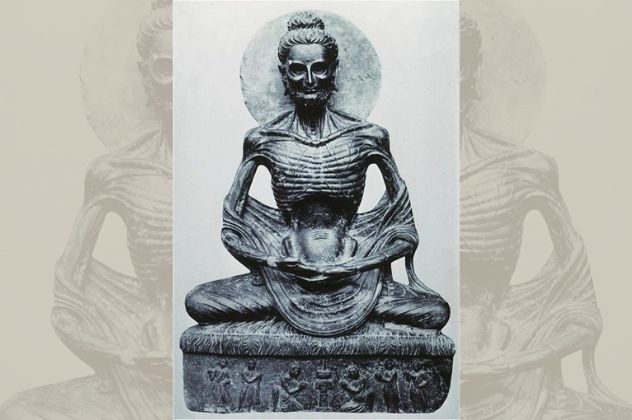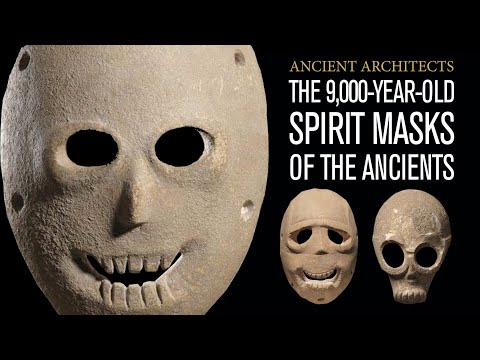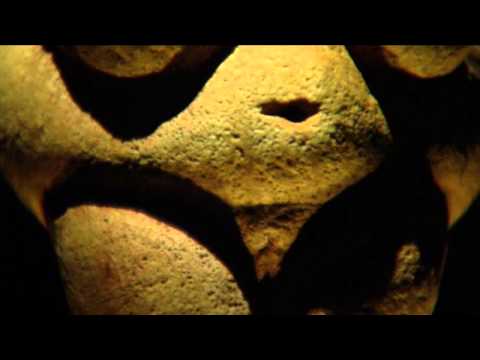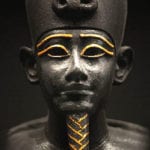However, relics can be any significant object that has survived from an earlier time that is of historical interest and can include old tools, texts, and vessels. Today we’ve included the ten most controversial ancient relics ever to be found, and some may surprise you.
10 The Big Shigir Idol
In 1894, gold prospectors exploring a peat bog near the Russian town of Yekaterinburg stumbled across something strange: a massive carved wooden statue over 16 feet (5 meters) long. Carefully sanded down, the colossal statue was found to have recognizable human faces and hands on its front and back, geometric lines, and other interesting design features. The mouth of its recognizable human head is an open “o.” After its discovery, and for more than a century, the statue was exhibited as a novelty in the Yekaterinburg Museum, believed to be only a few thousand years old. However, in 2018, it was discovered that the statue was carved not only from a single Larchwood log but also 11,600 years ago, around the end of the most recent Ice Age. The correct dating of the statue has crushed most of the common conceptions around prehistoric art left by hunter-gatherers dating back to the Ice Age. Although we can’t know for sure what it depicted, we should never underestimate the people who carved it. They had the necessary resources and skills, including a nuanced perception of the world.[1]
9 The Piri Reis Map
German historians discovered the Piri Reis map in Istanbul’s Topaki Palace library in 1929. Drawn on gazelle skin, the map was verified to have been drawn in 1513 by Piri Reis, a preeminent and chronicled admiral of the then-Turkish navy. In an annotation, Piri Reis noted that the map was constructed around the information he found on several other and older Spanish, Portuguese, and Arabic maps, even some that had been drawn by the explorer Christopher Columbus. Watch this video on YouTube The surviving fragments of the map depict the various parts of the world as they appeared to map-makers around the 15th century. The map includes all the discovered landmasses to date but comes with one mystery. The map depicts the northern coastline of Antarctica across its bottom section, which, according to historians, had not been discovered until 1773. To compound matters, the continent is connected to South America and is not covered with ice as it has been for the last 6,000 years. Several historians have claimed that the representation of Antarctica is reliable and that it follows the layout of the continent before it became covered with ice.[2]
8 The “Fasting Siddhartha” Sculpture
The Fasting Siddhartha sculpture, also known as the Fasting Buddha, dates back to the third century B.C. This exceptional example of Gandhara artwork was unearthed in Sikri, Pakistan, during the 19th century and continues to be one of the most outstanding artifacts from Pakistan’s Classical period. The sculpture depicts an exceptional degree of detail, including high reliefs, arms, armpits, ribs, and even veins. In the strict sense, the sculpture should be called the “Fasting Bodhisattva” as it represents an event that occurred well before the Buddha’s enlightenment. On his spiritual journey, Siddhartha Gautama sought out a variety of self-denying rituals, including 49 days of meditation and no food until he resembled a living corpse. Eventually, he realized that knowledge and depth of understanding, not physical impoverishment, would give rise to enlightenment. The sculpture was presented to the Lahore Museum of Pakistan in 1894, where it can be found on display to this day.[3]
7 The Nebra Sky Disc
The Nebra Sky Disk has generated a fair amount of controversy. From the looters who initially unearthed the object with metal detectors to the subsequent court hearings and the continued dispute between archaeologists and even claims of retaliation, the disk remains one of Germany’s most celebrated prehistoric objects. Many academics believe it is the oldest known accurate depiction of the cosmos, possibly an astronomical measurement tool used as an ancient clock to calculate planting and harvesting times. The relic was allegedly discovered in 1999 near Nebra in Germany by looters who attempted to sell it to black market dealers. Due to numerous contradictions in the looter’s stories on exactly how the artifact was obtained, historians continue to explore its origins and history to this day. Still, it is generally believed to be from the Bronze Age, around 3,500 years ago. Law enforcement agents posing as dealers eventually recovered the sky disc, and the looters were brought to justice. It is currently on display at the Halle State Museum of Prehistory.[4]
6 The Ancient Planes of Quimbaya
It’s normal to find unexplainable artifacts in Egypt, but just like the famous Saqqara bird, several relics that mimic aircraft designs have been found throughout Central and South America. The Quimbaya artifacts, specifically, were found in Colombia. The Quimbaya civilization, dated around AD 1000, created numerous items representing modern aircraft from pure gold. Some of these relics even had detailed tail struts and propellers, leading many to speculate that the ancient Colombians might have grasped the concept of aerodynamics and that these relics could be scale models of actual aircraft or gliders of some sort. The presence of so many parallels to modern-day aircraft underpins the “out of place artifact” theory, made popular by a variety of pseudo archaeologists and ancient alien theorists, who claim that the items appear much too sophisticated for the Quimbaya. Although the Quimbaya created numerous different types of gold artifacts (over 120 were, in fact, recovered from looters by the government), the general public’s attention remains focused on those that are believed to be too advanced for their civilization.[5]
5 The Jade Discs
The Jade discs, also known as bi disks, are circular flattened rings that were created during the Late Neolithic period. They seem to have been of significant importance as they were usually placed on the bodies of aristocrats and have been found in almost every single one of the large tombs of the Hongshan culture and continued through to the Liangzhu culture, 3800 BC to 2000 BC. Considering they were crafted from Jade, which is an exceptionally hard rock, it is perplexing that China’s ancient Neolithic inhabitants chose this material since they were made in an era when metal tools or instruments were not available. Some archaeologists have proposed that they could have been made by brazing and polishing—but that would have taken the creators an exceptionally long time. Others believe that the arrival of the Jade discs might be pertinent to the curious mystery of the Dropa stones, similar disk-shaped artifacts, which reportedly existed before the Jade Discs and were found in a cave near the China-Tibet border. The Jade Discs have been baffling archeologists for decades, but since they hail from an era before the invention of writing systems, their purpose and significance remain a mystery.[6]
4 The Devil’s Bible
The Codex Gigas is the largest known ancient manuscript in the world. In fact, its name literally means “giant book.” The massive manuscript was created during the 13th century and was initially housed in a monastery in Podlažice. It includes the Old and New Testaments and several shorter texts dealing with matters of significant practicality for its era, including exorcism, medical works, and a calendar. It is commonly referred to as the “Devil’s Bible” because of a detailed, full-page illustration of the Devil and, indeed, the legends of the single monk who supposedly created the book. Much logical and obviously diverse speculation prevails on how the most unholy feature possibly found its way into this truly religious text. However, the explanations remain limited. It might be precisely because of the continued suspense that everybody embraces the Codex Gigas—or, the Devil’s Bible if you will. The weighty manuscript eventually made its way to Stockholm at the end of the 16th century after the Swedish army plundered it from the Castle of the Holy Roman Emperor during the Thirty Years’ War.[7]
3 The Judean Stone Masks
The 9,000-year-old stone masks that have been excavated and otherwise found around the southern desert of Judea are among the most striking ancient artifacts of the region. To bring their age into perspective, King Solomon is believed to have lived about 3,000 years ago. Abraham lived just over 1,000 years before that, making these relics the earliest ceremonial treasure we’ve come across worldwide. In addition to their age is their exceptional rarity: Only 16 have been verified as the real thing and are known to exist. The ancient Neolithic stone masks are also historically significant, as they were created at the specific time in history when we started to organize ourselves into communities. However, the exact purpose these masks served in society 9,000 years ago remains a mystery. Much of the unknown comes from the fact that almost all the identified Neolithic masks originated from personal collections and have blurred origins without any archaeological background. Some believe that they could be linked to some form of ancestor worship as they all have unique features and might have been worn during rituals or ceremonies. To date, only two of the sixteen masks have a definite archaeological context. One mask was retrieved from a cave at Nahal Hemar, and the other is a mask that Israeli general Moshe Dayan purchased.[8]
2 The Venus Figurines
The Venus figurines are a collection of prehistoric sculptures of women created in the Paleolithic period. To date, more than 200 of these figurines have been discovered, mainly in Europe, but with findings as far as Siberia. Dating back to 30,000 and 10,000 BC, they all have identical physical features, including voluptuous figures with ample bosoms, posteriors, abdomens, and thighs. Their heads are usually relatively small and deprived of detail, and many lack hands and feet. The oldest uncovered to date is the Venus of Hohle Fels, dating 35,000–40,000 years ago. Watch this video on YouTube There is a significant divergence of views in archaeological and paleoanthropological research on the possible roles and importance of these artifacts. Some of the various hypotheses put forward include: that these figurines were created to stand in as fertility symbols, that they could have been self-portraits, that they were mere Stone Age dolls, or that they were possible realistic representations of ordinary women, the ideal depictions of female sexuality, religious images, or even a pornographic imagery counterpart.[9]
1 The Ubaid Lizards
During excavations at the Tell Al’Ubaid archeological site in Iraq in the early 1900s, archaeologists uncovered an extraordinary find. Several 7,000-year-old figurines depict humanoid figures with lizard-like attributes, including elongated heads, small contoured faces, and amygdaloid eyes. Many of the uncovered sculptures seemed to have modern headgear, while their delicately carved clothes suggested some padding or insulation over their shoulder areas. The artifacts depict both male and female figures in several poses that represent an everyday life not so different from ours, including figures that carry scepters, presumably as a gesture of justice or righteousness. Much like the Sumerians, the origins of the Ubaidian people have remained obscure. The Ubaidians were, however, the first sophisticated culture in Sumer, and their civilization can be traced back to 5500 to 4,000 BC. They lived in large villages, drained fertile marshes, expanded trade, and formed numerous industries, such as leather and metalwork, stonework, pottery, and weaving. The Ubaid culture eventually gave rise to a pre-Sumerian civilization that it influenced. It brought about impressive innovations in language and writing, architecture, and even politics—laying the foundation for modern life.[10]
























